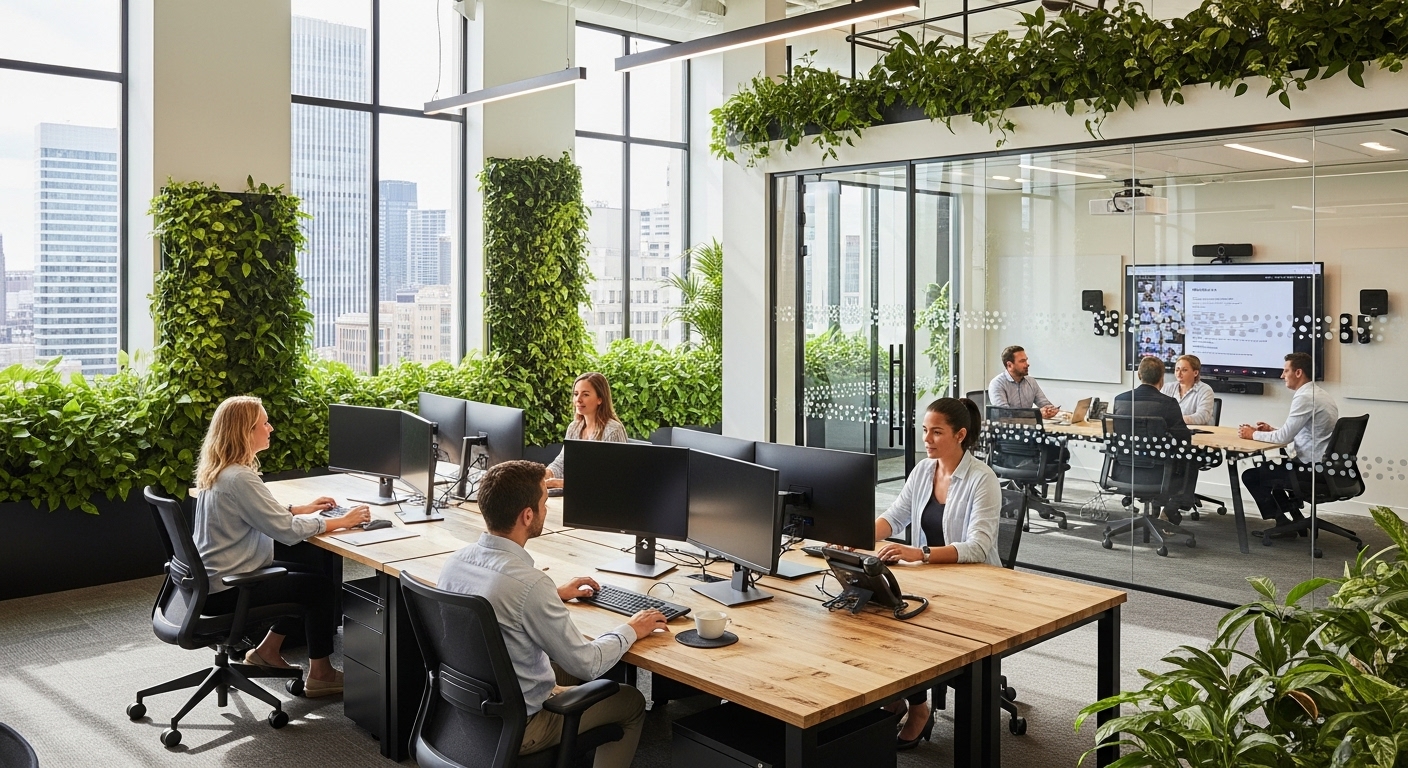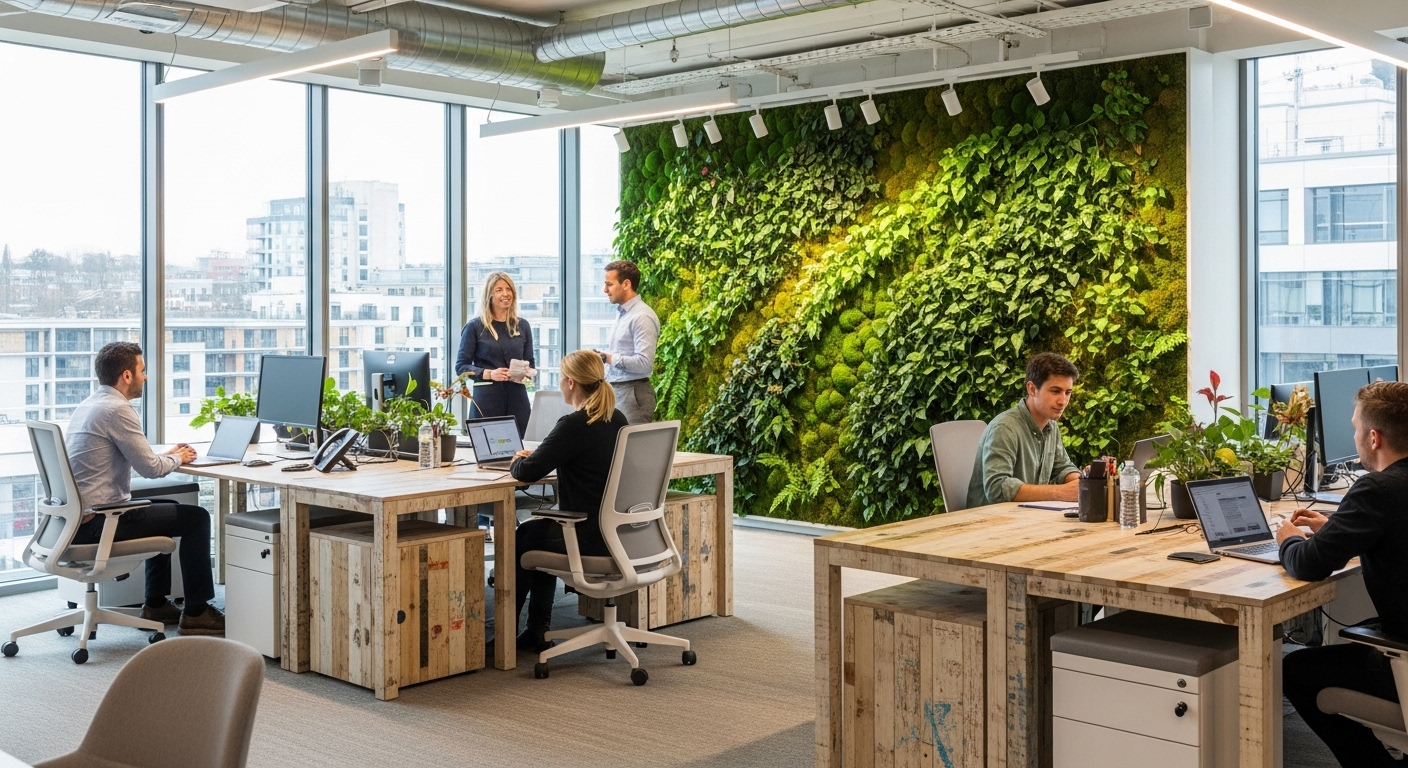The modern workplace is in the midst of a profound transformation, moving faster than ever before. The dual forces of rapid artificial intelligence adoption and a deepening understanding of human psychology are not separate trends but two sides of the same coin, creating what can be called the ‘generative workplace.’ This isn’t just about new tools or flexible schedules; it’s a fundamental shift in how we create value. While AI promises to augment human capabilities and automate routine tasks, its true potential can only be unlocked in an environment where people feel safe to experiment, fail, and collaborate openly. This article explores this powerful synergy, breaking down how the integration of generative AI with a culture of deep psychological safety is becoming the definitive blueprint for sustainable growth and innovation. We will examine the core components of this new workplace model, from redefining productivity to the new leadership skills required to navigate it, providing a roadmap for building a more creative, resilient, and human-centric future of work.
1. Beyond automation: AI as the great augmenter
For years, the conversation around AI in the workplace was dominated by automation and the fear of job replacement. The emergence of generative AI, however, is scripting a new narrative. The focus is shifting from simple task automation to human augmentation, where AI acts as a collaborative partner that enhances creativity, problem-solving, and efficiency. Instead of replacing employees, these tools are freeing them from mundane, repetitive work to focus on higher-value strategic thinking. For example, AI can analyze vast datasets to uncover market trends in seconds, giving a strategy team more time to debate the implications and craft innovative responses. Marketing teams can use AI to generate dozens of campaign ideas and copy variations, allowing them to focus on refining the message and understanding the customer’s emotional response. This symbiotic relationship fundamentally changes the nature of work. It demands a workforce that is not only proficient in using these tools but also skilled in critical thinking, emotional intelligence, and creative inquiry—the very skills that AI cannot replicate. The true value lies not in the technology itself, but in how it augments human intellect and ingenuity, creating a powerful engine for innovation that was previously unimaginable.
2. Psychological safety: the bedrock of a generative culture
If generative AI is the engine of the new workplace, psychological safety is the essential fuel. Defined as the shared belief that a team is safe for interpersonal risk-taking, it is the single most critical factor in unlocking the potential of both people and technology. In a psychologically safe environment, employees feel comfortable asking questions, admitting mistakes, and challenging the status quo without fear of humiliation or retribution. This is paramount in an era of rapid technological change. Implementing AI tools effectively requires experimentation, and experimentation inevitably involves setbacks. Without psychological safety, employees will be too risk-averse to try new AI-powered workflows or point out when a new system isn’t working as intended. They will stick to the old ways, and the massive investment in technology will yield minimal returns. Fostering this environment requires deliberate effort from leadership. It involves modeling vulnerability, rewarding intelligent failure, and creating structured opportunities for open, honest feedback. When people feel secure, they are more likely to engage in the divergent thinking that leads to breakthroughs, making the workplace not just efficient, but genuinely innovative.
3. Redefining productivity: from activity to impact
The traditional metrics of productivity, often tied to hours worked or tasks completed, are becoming obsolete in the generative workplace. AI-powered tools can complete in minutes what once took hours, making time-based evaluations meaningless. The focus must shift from measuring activity to measuring impact. What value was created? Did the project move the company closer to its strategic goals? Did it solve a critical customer problem? This requires a new performance management philosophy centered on outcomes and results. Leaders must work with their teams to set clear, ambitious goals and then empower them with the autonomy and tools—including AI—to achieve them. This outcome-oriented approach fosters a culture of ownership and accountability. It also aligns perfectly with the principles of flexible work. When the focus is on impact rather than presence, it matters less *where* or *when* the work is done. This shift allows organizations to embrace hybrid models and asynchronous workflows more effectively, attracting top talent that values autonomy and work-life integration. By redefining productivity, companies not only adapt to a new technological reality but also build a more engaging and trust-based relationship with their employees.
4. The fusion of flexibility and well-being
The move toward flexible work arrangements is not merely a post-pandemic trend; it’s a core component of an innovative workplace strategy. Flexibility, whether in location or hours, is a powerful enabler of employee well-being. By giving people more control over their work-life integration, organizations reduce burnout and increase engagement. This is not just a ‘soft’ benefit; it has a direct impact on the bottom line. A well-rested, mentally healthy employee is more focused, creative, and productive. In the generative workplace, technology and flexibility are intertwined. Collaboration platforms, project management software, and asynchronous communication tools make hybrid and remote work more seamless than ever. Furthermore, organizations are now leveraging technology to actively support well-being. As noted by Capgemini, the focus is on creating a holistic employee experience. This includes providing access to virtual mental health resources, using AI to personalize development plans that align with career goals, and encouraging a culture where taking time to recharge is seen as a prerequisite for high performance. This strategic fusion of flexibility and well-being creates a virtuous cycle: empowered and healthy employees are more innovative, driving the business forward in a sustainable way.
5. New leadership for a new era: the rise of the curator
Leading in the generative workplace requires a significant departure from traditional command-and-control management styles. The sheer pace of technological change means that no single leader can be an expert in everything. Instead, the leader’s role evolves into that of a ‘curator’ or ‘orchestrator.’ Their primary function is to create the conditions for their team to succeed. This involves three key responsibilities. First, they must be the chief architects of psychological safety, actively building a culture of trust and open dialogue. Second, they must become adept at curating the right mix of people, processes, and tools, ensuring the team has the resources it needs and that AI is integrated ethically and effectively. Third, they must champion clarity and purpose, constantly reinforcing the ‘why’ behind the work to keep the team aligned and motivated. This style of leadership relies on empathy, strong communication skills, and a high degree of digital literacy. The leader as curator doesn’t have all the answers; instead, they foster an environment where the team can discover the answers together, leading to more resilient and innovative outcomes.
6. Building the skills for a human-AI partnership
Thriving in the generative workplace demands a new set of skills, for both employees and the organization as a whole. While technical proficiency in using AI tools is important, the most durable skills will be uniquely human. Critical thinking becomes paramount, as employees must be able to evaluate the outputs of AI, identify potential biases, and apply judgment to its suggestions. Creative problem-solving is another key area. With AI handling routine analysis, the competitive advantage shifts to individuals who can frame unique problems and imagine novel solutions. Finally, collaboration and communication skills are more crucial than ever. As work becomes more distributed and cross-functional, the ability to build relationships, convey complex ideas clearly, and work effectively in a team is non-negotiable. Organizations have a responsibility to foster this development through continuous learning programs, mentorship, and by creating a culture that values curiosity and growth. By investing in these ‘power skills,’ companies are not just preparing their workforce for the future; they are building a resilient, adaptable organization capable of navigating any disruption and seizing the opportunities presented by the powerful partnership between humans and AI.
In conclusion, the generative workplace represents the next evolutionary step in the future of work. It is an ecosystem where the computational power of artificial intelligence and the creative potential of human ingenuity are not in opposition but are deeply intertwined. Building this workplace is not a purely technological challenge; it is a human one. It requires a foundational commitment to psychological safety, allowing for the risk-taking and experimentation necessary to innovate. It demands a redefinition of productivity, shifting the focus from hours logged to impact created, which in turn supports greater flexibility and well-being. Most importantly, it calls for a new model of leadership—one that curates culture, empowers teams, and provides clarity of purpose in an age of complexity. Organizations that successfully weave these threads together will do more than just survive the rapid changes ahead; they will create a dynamic, resilient, and deeply human environment where both people and profits can thrive. The future is not about choosing between technology and humanity; it’s about architecting a workplace where they amplify one another.





